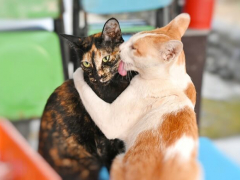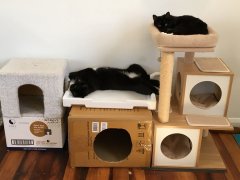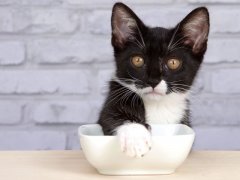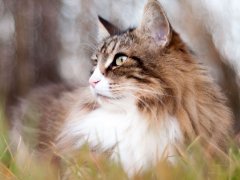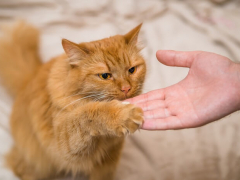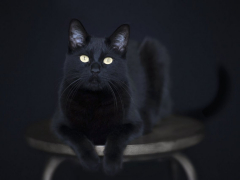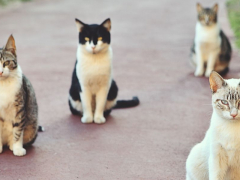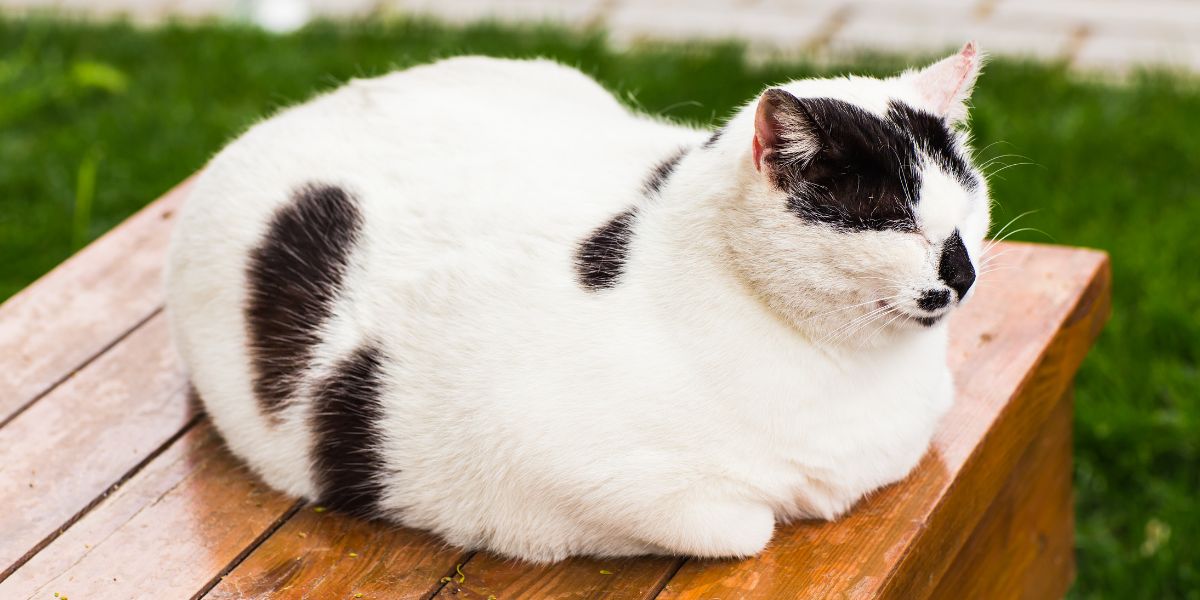
Out of all the adorable things your cat does, few are as charming as the cat loaf. Cat loaf, cat bread, potato cat, turkey cat, hovercat–whatever you call it, this precious resting position is (thankfully) common among our feline friends.
It’s normal to walk into a room and find your cat loafing on the back of the couch. Or maybe they’re doing their best bread imitation in the sunny spot by the window.
Some cats also loaf while watching their humans do mundane tasks like making dinner or working from home. When you catch your cat in this favored position, try to hold back your squeal of delight. You don’t want to ruin the moment.
But have you ever wondered why cats arrange themselves into this adorable position? It turns out that science has a few real answers.
What Does Loafing Mean?
If you’re not familiar with the term “cat loaf,” you’re probably pretty confused right now. But if you spend significant time around cats, you’ll undoubtedly recognize the cat loaf position, if not the terminology.
Cats loaf when they lay on their stomachs with their front feet tucked underneath their chests. The tail is probably curled around their side, and the back legs are also tucked securely underneath them. The result is a plump-looking rectangle that has obvious similarities to a loaf of bread. Hence, the cat loaf.
As a bonus, there are also several adorable loaf variations. These include a face loaf that involves a tired kitty and a face plant. There is also the Sphynx loaf where cats leave their front paws extended to resemble the Egyptian Sphynx monument.
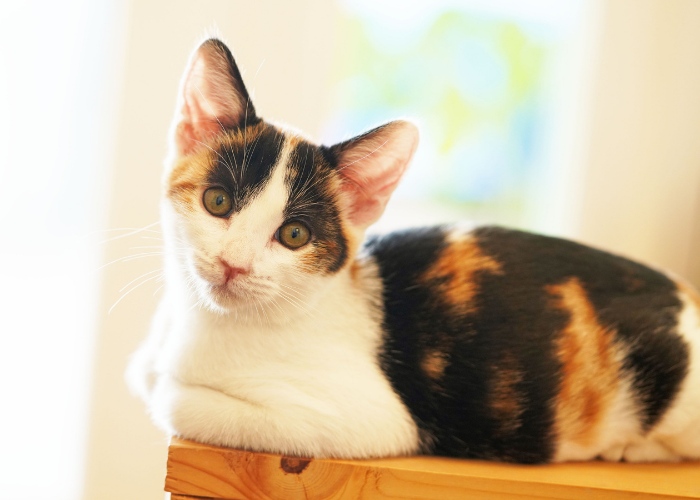
It’s impossible to confirm, but most feline experts say it’s safe to assume that cats loaf because it’s comfortable.
Why Do Cats Sit Like a Loaf?
Now that we’ve confirmed what a cat loaf is, here are a few of the most likely reasons why cats love to loaf.
1. Relaxation
It’s impossible to confirm, but most feline experts say it’s safe to assume that cats loaf because it’s comfortable. We all know that cats are connoisseurs of comfort. They have a favorite spot on the couch and have a knack for always hogging the fuzziest blanket. They also know how to position themselves in a way that takes the pressure off certain body parts.
Laying on your arms might not sound very comfortable, but remember that cats are built differently than humans. Not only is their skeletal structure different, but cats are also significantly more flexible than humans.
They can arrange their body parts into weird positions that look like they should be physically impossible, not to mention incredibly uncomfortable. But for cats, these positions feel good. You might even notice your cat giving you a loving slow blink while curled into the loaf position. This means they’re feeling fine and are enjoying your company.
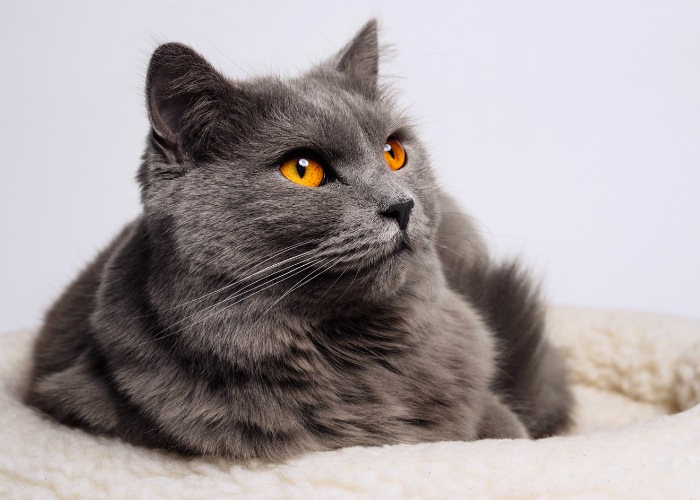
Even your pampered house cat knows that warmth is essential for life.
2. To Stay Warm
It’s also possible that cats loaf as a way to keep warm. Cats love to stretch out in the sunny spot on the floor and curl up close to heaters. Part of this is because warmth equals coziness, and we’ve already determined that cats love to be comfortable. It’s also, however, about survival.
Even your pampered house cat knows that warmth is essential for life. The knowledge that a little bit of preserved body heat could be the difference between life and death is an instinct that is ingrained in every cat’s brain. It’s a gift from their wild ancestors, and it sometimes affects behavior.
As mammals, cats produce their own body heat. But even with a fur coat, they’re susceptible to cold. A cat’s paws lose heat quickly, just like how your feet and hands get cold before any other body part. Your cat combats the cold by curling up and keeping their extremities close to the rest of their body. This helps preserve precious body heat.
The cat loaf position is perfect for keeping paws warm. If you’re wondering if your cat is cold when you see them in the loaf position, look at their tail.
Cats often curl their tails around their bodies when they’re cold. You can also touch your cat’s ears. Ears are another body part that get cold quickly. If your cat’s ears are cold to the touch, they’re probably feeling the chill.
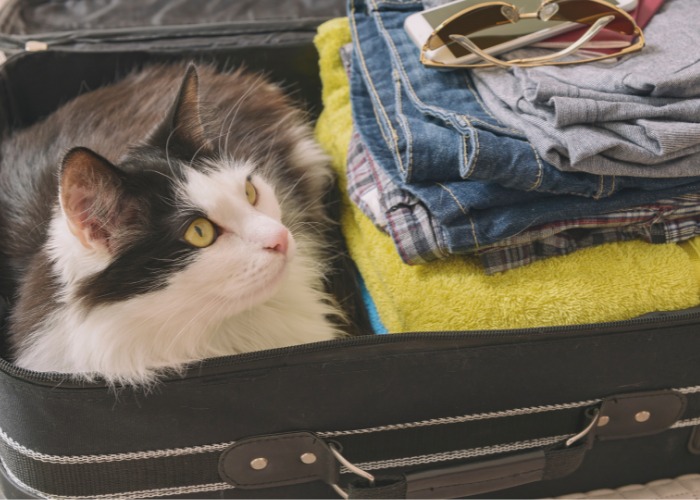
With their claws tucked away, your cat’s body language shows they aren’t feeling threatened or anxious.
3. A Nice Neutral Position
When a cat loafs, they’re feeling comfortable, but they’re not so relaxed that they’re ready to fall asleep. With their claws tucked away, your cat’s body language shows they aren’t feeling threatened or anxious. They don’t feel like they need to be ready to spring into action or run away quickly. If they did, they would be tense, and their paws wouldn’t be trapped underneath them.
Cat researcher Mikel Delgado with the School of Veterinary Medicine at UC Davis told Inverse Science, “Generally speaking, a cat who is lying with their paws tucked underneath them is considered relaxed. They aren’t preparing to defend themselves or run away.”
At the same time, however, the bread loaf position is protective. The vulnerable internal organs aren’t exposed, and the cat’s head is still upright to give them a good view of their surroundings.
These body language signals suggest the cat is feeling calm, but they still want to be aware of what’s going on around them. It’s not time to nap, but it’s also not time to sprint through the house or defend the family’s honor. Cat loafs are perfectly neutral.
The next time you spot a cat loaf in your living room, think about how your cat might be feeling. Are they watching you intently, or are their eyes squinty and soft? Are they near a natural heat source? Regardless of the reason, enjoy that adorable cat loaf and know that your feline friend is happy and comfortable.
